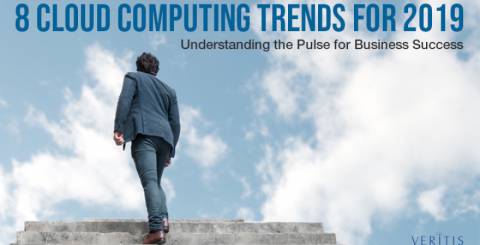8 Cloud Computing Trends for 2019: Understanding the Pulse for Business Success

Cloud computing made its headway into our businesses only a decade ago. But the new age of cloud technology is doing much more than just computing. It is introducing us to new tools and technologies that will keep organizations abreast with the market trends.
As the battle gets intense in 2019, the cloud industry will produce some of the biggest cloud providers. The combination of low-cost infrastructure and high-value development services is touting the cloud as the new enterprise digital application platform, increasing the investment on the cloud.

Here’s a list of trends that the cloud users will get to witness in 2019:
1) Investments in Enterprise Cloud Spending will Increase:
2019 will be a year of increased spending on cloud technologies as companies pursue modernizing processes and applications, to derive new data insights from legacy systems. This will be visible with new investments in SaaS applications, which will mobilize new cloud-based technology such as Kubernetes, containers and functions.
2) Multi /Hybrid Cloud Orchestration Platforms Will Become Popular
While firms are dependent on hybrid-cloud environments to divide data and workloads between on-premise and public providers, enterprises are heavily dependent on multi-cloud environments or simply use software-as-a-service SaaS apps that are outsourced. This creates a complex network that needs support from orchestration. This year will witness an increase in orchestration for multi/hybrid platforms and will see cloud managers working round-the-clock to reduce complexities, while providing clear insight into costs and consumption.
3) A Wave of Democratization – Cloud for All
2019 will continue to witness a distribution of technologies, including virtualization, hypervisors, cloud management tools and technology, across the length and breadth of the market. This trend will be propelled by open source technology. The developer’s arena will be the key force for this trend and continue to be an important influencer in 2019 and beyond.
4) Cloud Services That Are Customizable
2019 will present organizations and individual persons with specialized services customizable for applications such as blockchain integration, mobile technology and more. Cloud computing equips businesses with a range of capabilities through services including BaaS, PaaS, iPaaS, FaaS and mBaaS (Mobile-backend-as-a-service)
5) Full-stack Developers Understand Data Processing Engines
With enterprises shifting to the cloud to manage and orchestrate business operations, the role of data engineers is unlocked in innovative ways. As is evident, data has become the lifeline of most organizations’ survival. Hence, companies are constantly looking to draw inferences from analytics and data processing in their core businesses. For 2019, developers will need to equip themselves with the knowledge and skill required to run data processing engines such as Spark.
6) Cloud-Based AI and ML
AI and Machine Learning functionality and development platforms on public cloud are steadily making their way into more and more businesses, owing to the end user experience that these platforms deliver. With their emergence in early 2017, these platforms have only grown at a faster rate. 2019 will see this trend pick up greater speed and drive more business to the cloud.
7) Drive to Containerization
Containers with all the necessary executables files, libraries, binaries and configuration files, play a crucial role in modern day cloud implementations. Moreover, their portability makes them an all the more attractive element in cloud computing. 2019 will boost containerization, especially in the micro-services segment.
8) Enhanced Legacy Applications
When cloud technology entered the market, industry insiders thought that they could transfer most of their physical infrastructure and apps to the cloud. However, some companies continue to run their infrastructure in-house. Even though a few companies adopt cloud applications to offer improved services, most of their applications will continue to run on physical infrastructure. 2019 will see companies employing cloud capabilities including new database technologies, edge computing solutions for IoT, AI and ML capabilities to legacy systems for reviving legacy applications.
So, cloud professionals, are you ready to take on 2019?
Similar Articles
Find a reliable sealing technology with these 7 tips on quality, materials, certifications, and scalability to ensure lasting performance in your industry.
These days, your business depends on strong telecom systems and well-built software to stay ahead. Whether you’re launching a digital product or improving your communication tools, choosing the right team to work with makes a big difference.
Sometimes it seems like walking on a tight-rope when it comes to talking openly in team chats.
Learn how .NET Web API supports scalable architecture. Explore real-world best practices in .NET development for building high-performance, reliable endpoints.
Learn how to spot real fast USB-C charging by checking 4 key specs—output power, protocols, cable compatibility, and smart power distribution.
In the modern world of retail, logistics, and inventory management, few technologies have proven as transformative as the humble barcode reader.
Businesses must quickly adjust to the unparalleled rate of technological advancement if they want to remain competitive. Consumer demands are constantly changing, requiring value to be delivered more quickly.
Vertical centrifugal pump is vital in a wide range of industries, providing high-quality and durable solutions for pumping fluids
Have you ever imagined turning a weekend hobby into a thriving business? With 3D printing, that dream is more possible than ever









